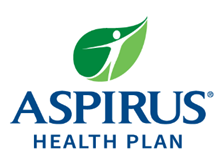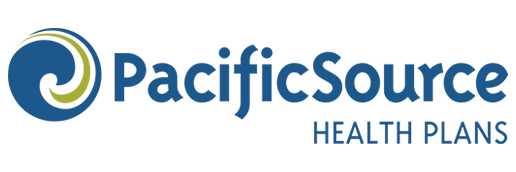October 7, 2021
by Megan Knauss
 We have known for years that American women of color experience significantly worse maternal health outcomes than White women. For example, data has shown for over a century that Black women have been significantly more likely to die from pregnancy-related causes.1 And yet, these disparities have persisted.
We have known for years that American women of color experience significantly worse maternal health outcomes than White women. For example, data has shown for over a century that Black women have been significantly more likely to die from pregnancy-related causes.1 And yet, these disparities have persisted.
ACHP member plans are deeply committed to improving maternal health, building on decades of investments they have made in their communities. ACHP’s recent environmental scan of its member health plans, funded by the Robert Wood Johnson Foundation and completed as part of the Raising the Bar project led by the National Partnership for Women & Families, revealed concentrated efforts by health plans in several areas foundational to achieving better birth outcomes across populations.
Implementing community-based, comprehensive care models
Today’s medical model is insufficient at delivering comprehensive, culturally competent maternal health care to diverse populations. Despite strong benefits of evidence-based community care providers, such as doulas and midwifes, in populations experiencing maternal health disparities these providers are under-utilized, as their role and the evidence-base to support it are not well-understood.2,3
Many ACHP member plans are moving toward a comprehensive, community-based care team in which non-clinical health care workers such as doulas, community health workers (CHWs) and midwives, partner with clinical care teams to meet the needs of pregnant women. By prioritizing community partnership and fostering deep knowledge of community health needs, ACHP plans use their unique payer-provider aligned model to create an environment that better supports the integration of these community-based team members.
While community-based models of care can be challenging, ACHP member Priority Health of Michigan has found success through a series of multi-faceted approaches. Priority Health uses a home visiting model for high-risk pregnancies, as well as the CenteringPregnancy model of care which incorporates individual one-on-one time between patients and their doctors and group-based prenatal care.
ACHP member plan UCare recognized the importance of doulas early on and lobbied for years to get them reimbursed by Minnesota Medicaid. UCare now provides culturally congruent doulas and care coordinators for care management from pregnancy through the first few months post-birth. Pennsylvania’s UPMC Health Plan covers doulas as part of an effort to improve access to care and reduce maternal health disparities. At HealthPartners in Minnesota, midwifery care is built into standard care by the delivery system and is covered by the health plan.
Community-based, comprehensive care models hold promise for improved, more equitable maternal health outcomes. ACHP plans are leveraging their strong relationships with communities and providers to innovate and expand community-based services for diverse populations.
Partnerships with public payers, the private sector and local communities
Maternal health and birth outcomes are impacted by many factors. Improving these outcomes will take collective action on the part of both public and private sectors, working in concert with local communities. By listening to those most at risk for adverse outcomes, prioritizing the problems they see as most urgent and designing solutions collaboratively, organizations can take steps to reduce disparities in care and improve maternal health outcomes. ACHP member health plans and their affiliated delivery systems have demonstrated that when communities experiencing disparities are engaged effectively the resulting solutions are often more effective.
For example, HealthPartners co-designed the Regions Hospital Family Birth Center with the local community. An individual’s care experience is highly correlated with patient outcomes, and while 35 percent of the patients delivering at the Birth Center were Black, the response rate for these patients was only 4 percent. In response to the low response rate, the health plan reached out to Black-led community organizations to understand how better to serve their specific needs.
Regions took an intentional and thoughtful approach to improve outcomes: measuring and understanding patient experiences and outcomes by race, ethnicity and language; partnering and connecting with the communities it serves; and training care teams in racial equity and bias.4 Feedback from the community led to concrete changes including offering interpreters, adding pictures to signage, creating family gathering spaces and developing a car seat program. Additional changes include the innovative Enhanced Couplet Care program which keeps high need newborns in the same room with birthing parent(s) and the family-friendly operating room and PACU spaces which include the whole family in care. The community collaboration has allowed the Birth Center to offer a birth experience that reflects patient values and culture. In addition, by sending shorter surveys via email and text, Regions Hospital Family Birth Center has been able to hear from more patients, increasing its survey response rate from patients of color by more than 50 percent.
Community partnerships remain very important to the Birth Center, including a close partnership with DIVA Moms (a Black pregnancy navigator program) and Everyday Miracle (a community-based, culturally aligned program for prenatal education and doula services). Similarly, PacificSource Health Plan of Oregon participates in a community advisory council, which draws from many sectors and includes community members representing different cultures. This participation helps build trust between the community and the health plan and provides a forum for ongoing dialogue fostering better health outcomes and more positive experiences for all stakeholders.
Ultimately, progress on health equity requires better data and exchange of information between stakeholders. We know from our work that availability and quality of data on race and ethnicity varies widely which makes it challenging to understand the exact nature and extent of disparities and whether progress is being made to eliminate them. Addressing this major data barrier to requires the combined efforts of public and private payers, as well as private sector innovators in both the non-profit and for-profit space.
Medicaid covers 50 percent of live births in the U.S. and is the only payer that consistently collects and reports performance on maternity quality measures.5 That makes Medicaid the primary driver of innovation in maternal health. Greater consistency across Medicaid in terms of coverage and quality would provide much-needed direction to reducing disparities in care and improving maternal health outcomes.
In the private sector, NCQA could provide leadership by embedding the identification and elimination of disparities into its accreditation programs and quality measurement activities. Equity must be embedded in quality performance measurement and reward systems nationally and at the state level if maternal health is to improve in the U.S.
Using alternative payment models that support better outcomes and improve equity
Maternity care that makes appropriate use of community-based provider services and is coordinated and tailored to individual needs cannot be supported by fee-for-service payment. Alternative payment models that enable flexible approaches and tie reimbursement to outcomes are essential. ACHP member plans are using alternative payment models to support innovative care that incorporates community-based providers, such as doulas and non-health service providers who can address social needs.
Many ACHP plans have worked in collaboration with provider health systems to negotiate maternity payment bundles and global billing arrangements, leveraging their unique payer-provider collaborative model. A few, including SelectHealth of Utah and Presbyterian Health Plan of New Mexico, have taken additional steps to eliminate payment for unnecessary care that increases risks for mothers and babies, such as early elective inductions and unnecessary c-sections, respectively.
ACHP’s environmental scan found that there is much work ahead to understand the best ways to implement alternative payment models that both support community-based care from a variety of providers and ensure availability of high-quality, standardized data, which is essential for value-based payment. Some ACHP member plans, such as SelectHealth and UPMC, are beginning to incorporate risk into their payment arrangements. But information sharing and operational complexity remain significant barriers to full value-based payment.
ACHP plans, committed to improving health equity, will continue to advance innovations in maternal health – including by testing new payment designs, continuing to engage community partners and prioritizing high quality coverage across all populations, with careful attention to the multi-generational impacts of maternal health equity.
References
1. The Commonwealth Fund. (2020, December). Maternal Mortality in the United States: A primer. https://www.commonwealthfund.org/publications/issue-brief-report/2020/dec/maternal-mortality-united-states-primer
2. Renfrew, M. J., McFadden, A., Bastos, M. H., Campbell, J., Channon, A. A., Cheung, N. F., et al. (2014, July). Midwifery and quality care: Findings from a new evidence-informed framework for maternal and newborn care. The Lancet. https://www.thelancet.com/action/showPdf?pii=S0140-6736%2814%2960789-3
3. Ogunwole, S. M., Bennett, W. L., Williams, A. N., Bower, K. M. (2021, January). Community-based doulas and COVID-19: Addressing structural and institutional barriers to maternal health equity. Perspectives on Sexual and Reproductive Health. https://onlinelibrary.wiley.com/doi/full/10.1363/psrh.12169
4. HealthPartners (2020, July). Regions Hospital delivers new birth center’s first baby shortly after doors open. https://www.healthpartners.com/hp/about/press-releases/regions-hospital-delivers-new-birth-centers-first-baby.html
5. Medicaid and CHIP Payment and Access Commission. (2020, January). Medicaid’s role in financing maternity care. https://www.macpac.gov/wp-content/uploads/2020/01/Medicaid%E2%80%99s-Role-in-Financing-Maternity-Care.pdf.


































